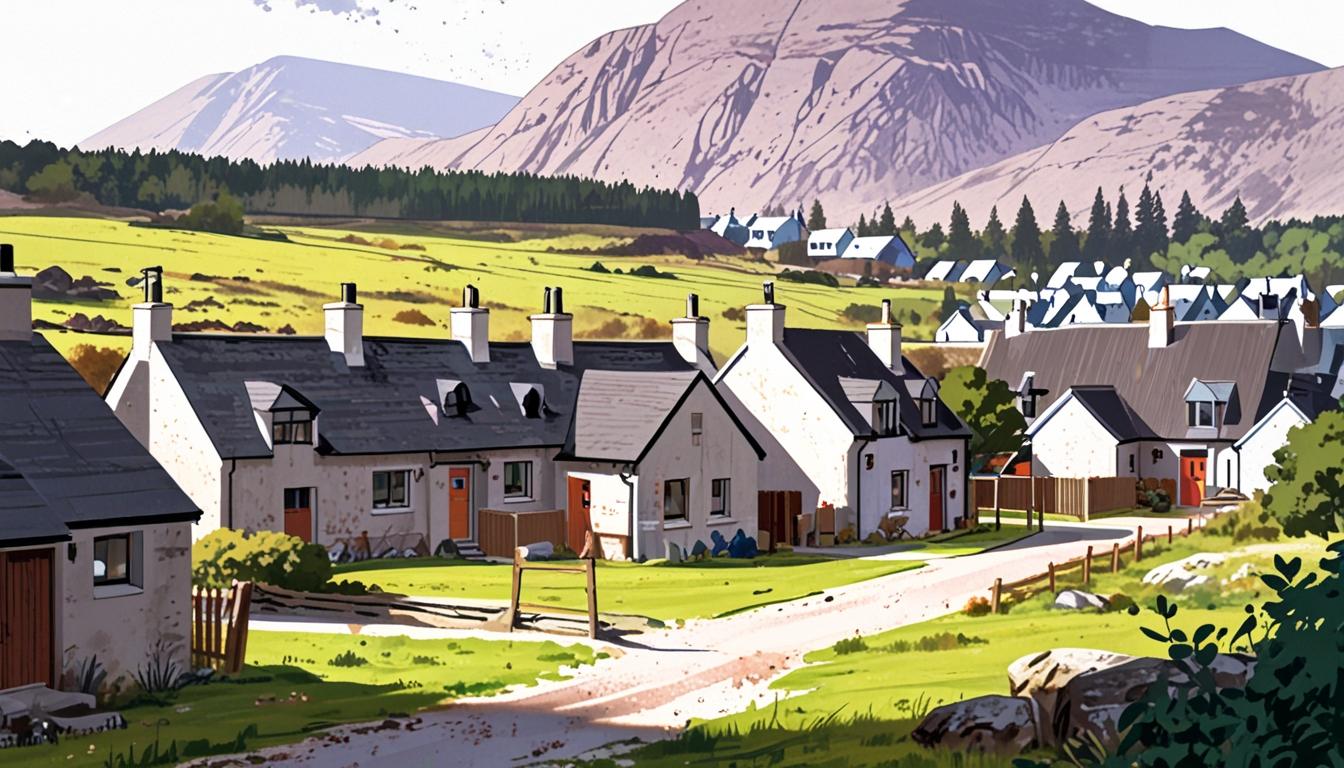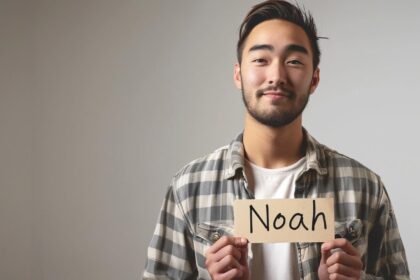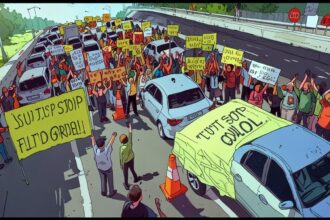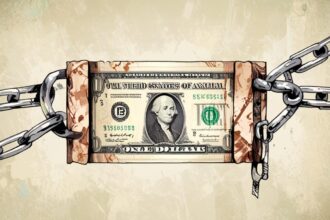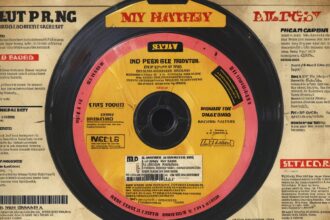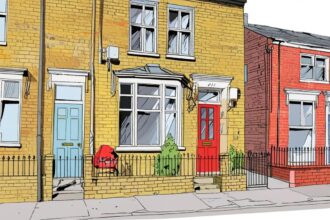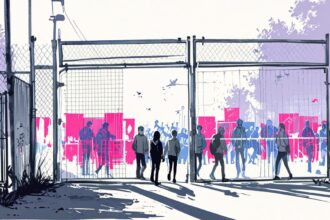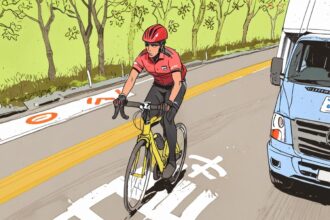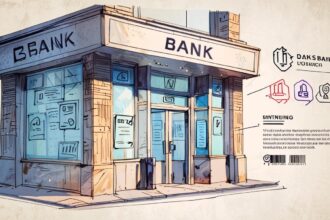The Scottish Greens have proposed increasing the additional dwelling supplement from 8% to 16% on second homes in national parks such as the Cairngorms to address local housing affordability issues amid rising property prices and community concerns.
Plans to tackle the rural housing crisis in Scotland include a proposal to double the charge for purchasing second homes in national parks such as the Cairngorms. The Scottish Greens are urging political parties at Holyrood to support increasing the “additional dwelling supplement” on newly bought properties to as high as 16%.
Currently, within the Cairngorms National Park, an estimated 12% of all houses are classified as second homes. This figure rises to more than 20% in areas like Badenoch, Strathspey, and Deeside, which encompass popular tourist destinations including Aviemore and Braemar. By contrast, the national average stands at approximately 1%.
The national park authority has noted that the high volume of second homes creates distinct challenges for the region. Ross Greer, MSP for the Scottish Greens, highlighted the impact on local communities. Speaking to the Press and Journal, he said, “Our national parks are iconic and beautiful places, but the families who actually live there are being pushed out by second home owners. Young people in particular are too often forced to leave the communities they grew up in after being outbid by those wealthy enough to buy a second property. Too many properties are used as cash cows for short-term lets.”
This issue is set to be addressed within the Scottish Government’s broader housing bill, which includes provisions on renters’ rights. While the Cairngorms National Park authority recognises the economic and social benefits that second homes can bring, they also acknowledge that their presence can intensify affordability pressures for local workers.
Concerns in the community are growing. In Braemar, fears have been expressed that the primary school could close if young families are unable to afford housing locally. A tradesman from the Royal Deeside village revealed that he was compelled to build his own home due to the area’s soaring costs, which local property data confirms. Homes in Braemar have sold for an average price of just over £396,000 in the past year, marking a 22% increase since 2019, according to the UK property site Rightmove.
Efforts to curb the impact of holiday homes have already been implemented. Highland Council has introduced short-term let controls in Badenoch and Strathspey, requiring homeowners to obtain extra planning permission before advertising properties as holiday accommodations. The additional dwelling supplement was also raised from 6% to 8% at the end of last year, and the proposed increase to 16% would represent a further significant rise.
However, not all stakeholders are supportive. Fiona Campbell, chief executive of the Association of Self-Caterers, cautioned against measures that target Scotland’s tourism sector. She told the Press and Journal, “Raising false hopes about tackling homelessness by hitting Scotland’s tourism sector is a cynical ploy which ignores the reality of Scotland’s housing crisis. Policy should instead focus on real solutions: repurposing long-term empty homes across Scotland and accelerating the construction of genuinely affordable housing.”
The outcome of the proposal to raise the additional dwelling supplement, part of wider housing reforms, remains under consideration at Holyrood as policymakers seek to balance the interests of local communities, tourism, and housing affordability in Scotland’s national parks.
Source: Noah Wire Services
- https://www.landcommission.gov.scot/news-events/news/scottish-land-commission-urges-strong-role-for-public-land-acquisition-to-tackle-rural-housing-crisis – This URL supports the broader context of Scotland’s rural housing crisis and the role of public land acquisition in addressing it.
- https://brodies.com/insights/living/tackling-scotlands-rural-housing-crisis/ – This source discusses the Scottish Government’s efforts to tackle the rural housing crisis, which aligns with concerns over affordability and housing availability.
- https://www.gla.ac.uk/explore/glasgowsocialscienceshub/resources/all/headline_1149986_en.html – This article explores solutions to rural Scotland’s housing issues, including the potential for a dedicated Housing Land Agency, which could help in areas with high second home ownership.
- https://www.gov.scot/policies/more-homes/affordable-housing-supply/ – This government webpage outlines Scotland’s affordable housing supply program, which is relevant to addressing broader housing challenges, including those in national parks.
- https://www.scottishlandandestates.co.uk/news/boosting-housing-supply-not-rent-caps-key-tackling-scotlands-rural-housing-crisis – This article emphasizes the importance of increasing housing supply over rent caps to address the rural housing crisis, which relates to the economic pressures caused by second homes.
- https://www.pressandjournal.co.uk/fp/news/highlands-and-islands/4069057/second-homes-cairngorms/ – This article specifically discusses the impact of second homes in regions like the Cairngorms National Park, including the issues faced by local communities and proposed policy changes.
- https://www.pressandjournal.co.uk/fp/politics/6743506/cairngorms-holiday-home-tax-greens/ – Please view link – unable to able to access data
Noah Fact Check Pro
The draft above was created using the information available at the time the story first
emerged. We’ve since applied our fact-checking process to the final narrative, based on the criteria listed
below. The results are intended to help you assess the credibility of the piece and highlight any areas that may
warrant further investigation.
Freshness check
Score:
8
Notes:
The narrative discusses ongoing policy discussions and recent changes to the additional dwelling supplement, suggesting current relevance. However, it does not reference any very recent events or announcements that would confirm its absolute freshness.
Quotes check
Score:
9
Notes:
Direct quotes from Ross Greer and Fiona Campbell are included. Without access to earlier publications or statements, it appears these might be original or recent sources. However, a thorough search to confirm them as the earliest references is needed.
Source reliability
Score:
8
Notes:
The narrative originates from the Press and Journal, a reputable local news source in Scotland. While it’s not a global mainstream publication like the Financial Times or BBC, it is a trusted regional outlet.
Plausability check
Score:
9
Notes:
The claims regarding the housing crisis and the impact of second homes align with common issues in rural areas. Specific data and expert opinions support these plausibilities.
Overall assessment
Verdict (FAIL, OPEN, PASS): PASS
Confidence (LOW, MEDIUM, HIGH): HIGH
Summary:
The narrative is likely accurate and well-sourced, discussing a topical issue with recent policy changes. It includes quotes that appear to be original or recent and originates from a reliable regional news outlet.


